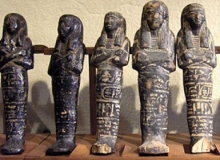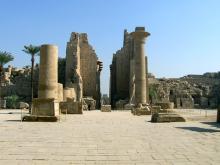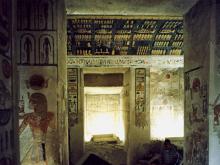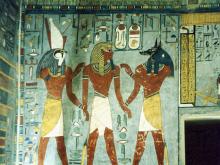
Speak to a specialist
0208 777 4873
0208 777 4873
Luxor




Luxor
A magnificent ancient township built on the site of the even more ancient city of Thebes, dating back 4,000 years. The Luxor Temple is a remarkably delicate work of architecture, originally built by Pharaoh Amenophis, and added to by various rulers over the aeons, including Alexander the Great. The Luxor Museum has a wonderful collection of ancient statuary, as well as relics from the ancient city of Thebes.
Temple of Karnak
Located at the northern end of the town of Luxor, Karnak Temple has three main sacred areas that honour three gods: Montu, an ancient local warrior god; Amun, the chief god of Thebes; and the goddess Mut, wife of Amun. Amun, Mut and their son, Khonsu, were members of the sacred family known as the Theban Triad.
The construction of Karnak Temple began in the Middle Kingdom and was completed during the New Kingdom, some 1,600 years later. Every successive king of this era added to the temple, which covers two hectares (five acres) of land. It is a complicated site with four courtyards, ten pylons, a sacred lake and several buildings.
Valley of the Kings
The Valley of the Kings is famous for its royal tombs. These beautifully painted tombs have been designated a World Heritage Site by UNESCO. For over a thousand years, the kings, queens and nobles of the New Kingdom (1500-1070 BC.) were buried in this valley making it the world's most magnificent burial ground. The most famous tomb (KV No.62) belongs to the boy king Tutankhamun.
It was discovered on November 22, 1922 by the English archaeologist Howard Carter. The tombs were cut into the limestone rock in a remote wadi (a dried-up river valley) on the west bank of the Nile, opposite the present day city of Karnak. Their walls were painted and sculpted with magnificent murals depicting scenes of daily life and the land of the gods. The chambers were filled with treasures - everything from furniture to food, statues, boats and jewels, which a person may need to sustain life into eternity. The royals and their courtiers hoped to find refuge from robbers and their enemies, who had pillaged the pyramid tombs of their predecessors.
Temple of Madinat Habu
The entire Temple of Ramesses III, palace and town is enclosed within a defensive wall. Entry is through the Highgate, or Migdol, which, in appearance resembles an Asiatic fort. Just inside the Highgate, to the south, are the chapels of Amenirdis I, Shepenwepet II and Nitoket, wives of the god Amun. To the north side is the chapel of Amun. These chapels were a later addition dating to the 18th Dynasties, by Hatshepsut and Tutmoses II. Later the Ptolemaic kings of the XXV Dynasty made renovations.
Temple of Hathor in Dendara
The Temple of Hathor, goddess of Joy, is a Greco-Roman creation built between 125 BC and 60 AD. It emulates the Pharaonic pattern of hypostyle halls and vestibule preceding a darkened sanctuary. In this temple Hathor takes the human form rather than her bovine aspect.
Valley of the Queens
The Valley of the Queens is a misnomer for it also houses the tombs of high officials and royal children along with the various queens and concubines. The valley contains 80 tombs, most of which are uninscribed and simple in plan although the murals in these can rival those in the Valley of the Kings. The reopening of the tomb of Nefertari in 1995 has given the Valley of the Queens an extra fillip.
A magnificent ancient township built on the site of the even more ancient city of Thebes, dating back 4,000 years. The Luxor Temple is a remarkably delicate work of architecture, originally built by Pharaoh Amenophis, and added to by various rulers over the aeons, including Alexander the Great. The Luxor Museum has a wonderful collection of ancient statuary, as well as relics from the ancient city of Thebes.
Temple of Karnak
Located at the northern end of the town of Luxor, Karnak Temple has three main sacred areas that honour three gods: Montu, an ancient local warrior god; Amun, the chief god of Thebes; and the goddess Mut, wife of Amun. Amun, Mut and their son, Khonsu, were members of the sacred family known as the Theban Triad.
The construction of Karnak Temple began in the Middle Kingdom and was completed during the New Kingdom, some 1,600 years later. Every successive king of this era added to the temple, which covers two hectares (five acres) of land. It is a complicated site with four courtyards, ten pylons, a sacred lake and several buildings.
Valley of the Kings
The Valley of the Kings is famous for its royal tombs. These beautifully painted tombs have been designated a World Heritage Site by UNESCO. For over a thousand years, the kings, queens and nobles of the New Kingdom (1500-1070 BC.) were buried in this valley making it the world's most magnificent burial ground. The most famous tomb (KV No.62) belongs to the boy king Tutankhamun.
It was discovered on November 22, 1922 by the English archaeologist Howard Carter. The tombs were cut into the limestone rock in a remote wadi (a dried-up river valley) on the west bank of the Nile, opposite the present day city of Karnak. Their walls were painted and sculpted with magnificent murals depicting scenes of daily life and the land of the gods. The chambers were filled with treasures - everything from furniture to food, statues, boats and jewels, which a person may need to sustain life into eternity. The royals and their courtiers hoped to find refuge from robbers and their enemies, who had pillaged the pyramid tombs of their predecessors.
Temple of Madinat Habu
The entire Temple of Ramesses III, palace and town is enclosed within a defensive wall. Entry is through the Highgate, or Migdol, which, in appearance resembles an Asiatic fort. Just inside the Highgate, to the south, are the chapels of Amenirdis I, Shepenwepet II and Nitoket, wives of the god Amun. To the north side is the chapel of Amun. These chapels were a later addition dating to the 18th Dynasties, by Hatshepsut and Tutmoses II. Later the Ptolemaic kings of the XXV Dynasty made renovations.
Temple of Hathor in Dendara
The Temple of Hathor, goddess of Joy, is a Greco-Roman creation built between 125 BC and 60 AD. It emulates the Pharaonic pattern of hypostyle halls and vestibule preceding a darkened sanctuary. In this temple Hathor takes the human form rather than her bovine aspect.
Valley of the Queens
The Valley of the Queens is a misnomer for it also houses the tombs of high officials and royal children along with the various queens and concubines. The valley contains 80 tombs, most of which are uninscribed and simple in plan although the murals in these can rival those in the Valley of the Kings. The reopening of the tomb of Nefertari in 1995 has given the Valley of the Queens an extra fillip.
Subscribe here to our monthly newsletters


